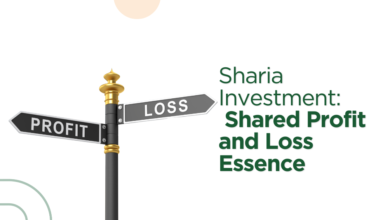How to fund Green Economy Through Crowdfunding
Environmental awareness has grown significantly over the past few decades, driven by the threat of climate change, global warming, and widespread environmental degradation. To address these issues, various innovative solutions have emerged, one of which is green financing. This concept involves the allocation of funds to support projects with a positive environmental impact. One particularly interesting approach within green financing is crowdfunding, which enables the general public to participate in funding green projects.
Understanding Green Financing
Green financing refers to financial mechanisms aimed at supporting projects focused on reducing carbon emissions, increasing energy efficiency, and promoting environmentally friendly business practices. These projects often include the development of renewable energy infrastructure, biodiversity conservation, waste management, and climate change adaptation.
Typically, governments, financial institutions, institutional investors, and large corporations lead green financing efforts. However, the success of this strategy also heavily relies on public and private sector involvement on a smaller scale. Green bonds and green loans have become key tools for raising funds for these projects, with the proceeds exclusively used for activities that benefit the environment.
The Role of Crowdfunding in Green Financing
Crowdfunding as a funding model has significantly changed how green projects are financed. This model removes barriers often faced by small and medium-sized enterprises (SMEs) and non-governmental organizations (NGOs) when seeking financing from traditional financial institutions. Through crowdfunding, projects that might be overlooked by large investors can gain direct support from the public.
Crowdfunding platforms like Kickstarter, Indiegogo, and GoFundMe allow fundraisers to present their ideas to the public. Project backers can then contribute small amounts, which, when combined, can reach significant sums to fund green projects. Projects funded through crowdfunding are often diverse, ranging from solar energy installations in schools to organic farming initiatives in rural areas.
Successful Examples of Crowdfunding for Green Projects
One successful example of crowdfunding for green projects is the “Solar for Schools” campaign in the United Kingdom, which successfully funded the installation of solar panels in schools. Through a crowdfunding platform, this project raised funds from the local community to install solar panels on the roofs of schools that previously lacked access to renewable energy. This project not only helped reduce the carbon footprint of these schools but also served as an educational tool for students about the importance of clean energy.
Transparency and Trust in Green Crowdfunding
One of the main advantages of crowdfunding is transparency. Fundraisers must clearly explain the project’s goals, how funds will be used, and the expected environmental impact. This transparency allows donors to monitor the progress of the projects they support, creating a sense of involvement and shared responsibility.
Trust is a key element in the success of crowdfunding campaigns. Projects with high transparency in reporting and fund usage are more likely to gain sustained support from the donor community. In the context of green financing, where there are often concerns about “greenwashing” or misleading green claims, transparency becomes even more critical.
Also Read:Islamic Crowdfunding-Based Agrarian Financing: Concept, Akad, and Benefits
Challenges and the Future of Crowdfunding-Based Green Financing
However, crowdfunding for green projects is not without its challenges. One of the biggest challenges is public education and awareness. Although environmental awareness is growing, many people still do not understand the importance of green investments or how they can contribute through crowdfunding. Therefore, public education on the importance of sustainability and the economic benefits of green investments is crucial to increasing participation.
Moreover, the risks associated with green projects funded through crowdfunding, such as project failure or regulatory uncertainty, can also hinder investor interest. In this regard, crowdfunding platforms need to offer certain protections and guarantees to donors to minimize these risks.
Nevertheless, the future of crowdfunding-based green financing looks bright. With the support of technology, such as blockchain, transparency and accountability can be further enhanced. Blockchain allows every transaction to be recorded permanently and transparently, reducing the possibility of fraud and increasing donor trust.
As more governments and companies recognize the importance of sustainability, crowdfunding can evolve into a major tool for raising funds for green projects worldwide. Collaboration among various stakeholders, from governments to the general public, will be key to the success of this initiative.
Conclusion
Crowdfunding-based green financing offers an inclusive and innovative approach to funding projects with a positive environmental impact. By engaging the global community and leveraging the power of technology, crowdfunding can become an integral part of the global effort to achieve environmental sustainability. Although challenges remain, the potential of this approach is vast, especially if supported by the right policies and higher public awareness.

References:
- World Bank. (2019). Financing Climate Action: Green Bond Impact Report. Retrieved from https://www.worldbank.org/en/news/feature/2019/03/18/financing-climate-action-green-bond-impact-report
- Schmidt, T. S., & Hansmeier, H. (2018). The Role of Crowdfunding in Green Financing. Journal of Sustainable Finance & Investment, 8(3), 248-262. doi:10.1080/20430795.2018.1445959
- Solar for Schools – Education funded by the sun. (n.d.). Www.solarforschools.co.uk. https://www.solarforschools.co.uk/services/securing-funding





